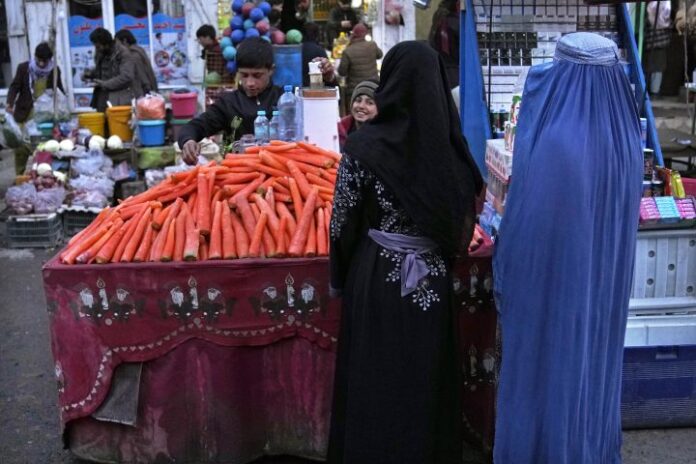Afghanistan’s Taliban rulers on Saturday ordered all Afghan women to wear head-to-toe clothing in public – a sharp, hard-line pivot that confirmed the worst fears of rights activists and was bound to further complicate Taliban dealings with an already distrustful international community.
The decree, which calls for women to only show their eyes and recommends they wear the head-to-toe burqa, evoked similar restrictions on women during the Taliban’s previous rule between 1996 and 2001.
“We want our sisters to live with dignity and safety,” said Khalid Hanafi, acting minister for the Taliban’s vice and virtue ministry.
Read more:
Taliban’s latest rules: Parks segregated by sex, media access cut, men’s grooming policed
The Taliban previously decided against reopening schools to girls above grade 6, reneging on an earlier promise and opting to appease their hard-line base at the expense of further alienating the international community.
That decision disrupted efforts by the Taliban to win recognition from potential international donors at a time when the country is mired in a worsening humanitarian crisis.
“For all dignified Afghan women wearing Hijab is necessary and the best Hijab is chadori (the head-to-toe burqa) which is part of our tradition and is respectful,” said Shir Mohammad, an official from the vice and virtue ministry in a statement.
“Those women who are not too old or young must cover their face, except the eyes,” he said.
Lack of support for Afghan refugees frustrating Canadian veterans – Apr 27, 2022
The decree added that if women had no important work outside it is better for them to stay at home. “Islamic principles and Islamic ideology are more important to us than anything else,” Hanafi said.
Trending Stories
Judge rejects B.C. government’s bid to drop case against COVID-19 vaccine orders
Mattea Roach’s record-breaking Jeopardy! run is over after losing by $1
Senior Afghanistan researcher Heather Barr of Human Rights Watch urged the international community to put coordinated pressure on the Taliban.
“(It is) far past time for a serious and strategic response to the Taliban’s escalating assault on women’s rights,” she wrote on Twitter.
The Taliban were ousted in 2001 by a U.S.-led coalition for harboring al-Qaida leader Osama bin Laden and returned to power after America’s chaotic departure last year.
Since taking power last August, the Taliban leadership has been squabbling among themselves as they struggle to transition from war to governing. It has pit hard-liners against the more pragmatic among them,
Afghan women face bleak future under Taliban rule – Oct 28, 2021
Infuriating many Afghans is the knowledge that many of the Taliban of the younger generation, like Sirajuddin Haqqani, are educating their girls in Pakistan, while in Afghanistan women and girls have been targeted by their repressive edicts since taking power.
Girls have been banned from school beyond grade 6 in most of the country since the Taliban’s return. Universities opened earlier this year in much of the country, but since taking power the Taliban edicts have been erratic. While a handful of provinces continued to provide education to all, most provinces closed educational institutions for girls and women.
The religiously driven Taliban administration fears that going forward with enrolling girls beyond the the sixth grade could alienate their rural base, Hashmi said.
In the capital, Kabul, private schools and universities have operated uninterrupted.
© 2022 The Canadian Press



